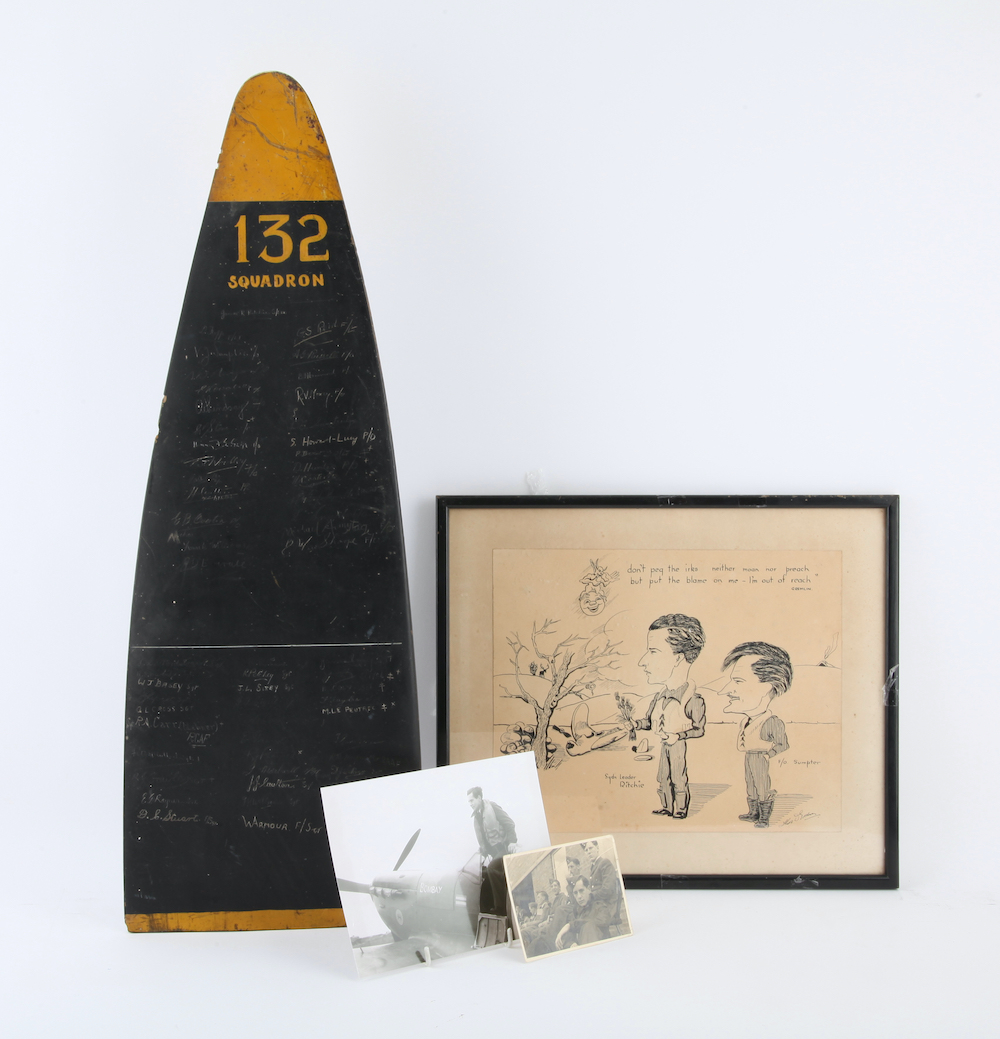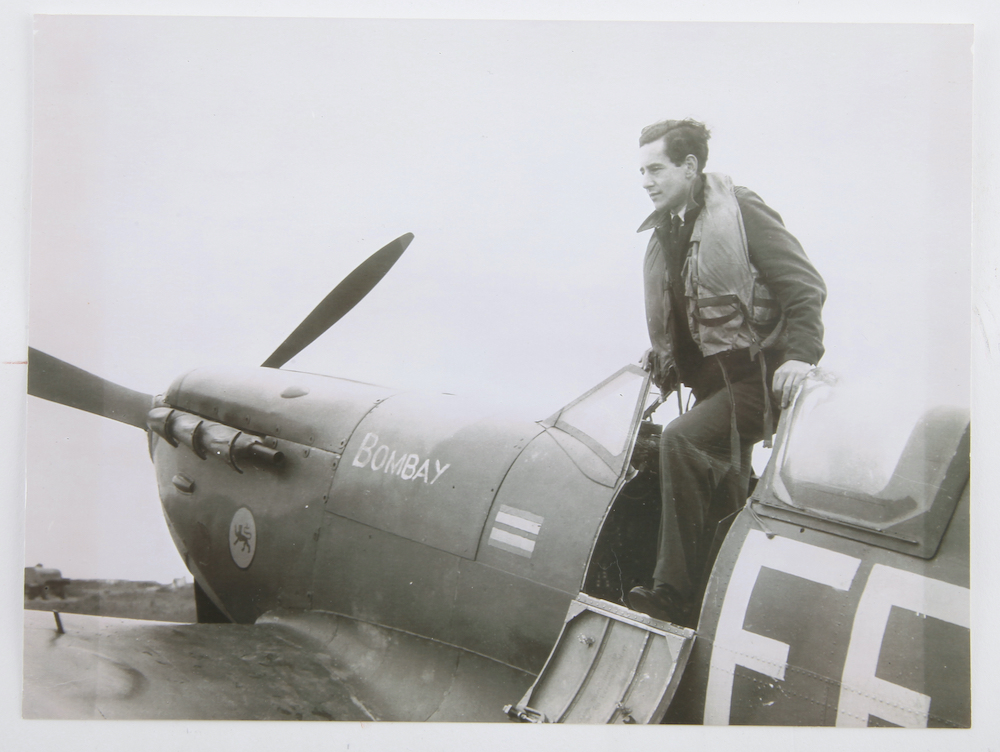Spitfire pilot’s effects in Surrey sale
 Inspired by Battle of Britain Day Ewbank’s Auctioneers in Surrey will sell the personal effects of a spitfire pilot and squadron leader on September 23.
Inspired by Battle of Britain Day Ewbank’s Auctioneers in Surrey will sell the personal effects of a spitfire pilot and squadron leader on September 23.
On September 15 it will be 72 years since the height of the war in our skies that changed the course of history. Thanks to The Few, Hitler’s hoped for decimation of the Royal Air Force never took place, and as so he cancelled his planned invasion of Britain.

Now Ewbank’s will offer the personal Omega wristwatch, medal bar and wings of Squadron Leader James Ritchie (1920-94), as well as a spitfire propeller tip inscribed 132 Squadron, and with the signatures of many of the squadron members. Also included are an ink Gremlin cartoon depicting Ritchie and Flight Officer Sumpter standing by a crashed aircraft, photographs, training material, contemporary maps and other items.
These were the effects gathered over the career of a man who joined the RAF on a short service commission in February 1939 at the age of 18 and found himself one of The Few, flying 70 sorties totalling 60 hours in just 20 days as a fully fledge spitfire pilot during the Battle of Britain 18 months later.
The Battle of Britain Archive gives a detailed account of Ritchie’s action, which began on August 26, 1940 with a frontal attack on 50 Dorniers and 100 Me109s and 110s. Five days later he attacked three bombers head on at 15,000ft, claiming one as ‘probable’. “I fired a 13 second burst at the No.3 in the formation,” he reported. “Just before I broke away, I noticed a large piece of wreckage falling away from the Do17.” He then attacked three Me110s, claiming one as ‘probably destroyed’.

Two days after that, Ritchie scrambled over the isle of Sheppey, making a head-on attack at 14,000 feet against 20 Heinkel bombers escorted by Me109s.
“I made a head-on attack in formation with the rest of Red Section on the three leading He111s, closing to 50 yds before breaking away I could see large pieces of wreckage falling from the bomber,” he later wrote. His own aircraft was slightly damaged by an Me109, forcing him to land at Rochford.
Two days later, he filed a claim for the probable destruction of an He111 during one of his three sorties that day.
And so the official reports continued until mid-October, setting out the claims and crashes of his fellow pilots, their interceptions with Messerschmidt fighters, Heinkel bombers and the dreaded Junkers 88 heading north to bomb London.
With more flying and combat experience than men twice his age, having attended an instructor’s course Ritchie was given command of 132 (City of Bombay) Squadron aged 22, in 1942.
Even this was old for Battle of Britain spitfire pilots, whose average age was just 20 years.
Ritchie went on to lead the squadron in ‘Circus’ and ‘Ramrod’ sorties over France until August 1943.
With his tour completed he was posted to India to instruct pilots forming the new Independent Air Force for which he was awarded the AFC (gazetted 13th June 1946).
When the war ended, Ritchie stayed on commanding 20 (Ground Attack) Squadron RIAF, flying typhoons in Waziristan. He then returned to the UK as Chief Flying Instructor CFS Upavon where he topped the class graduating with distinction and winning the Clarkson and CFS Trophies. By the late 1950s he was serving with 22 ASR Squadron operating whirlwinds.

After a decade of NATO staff appointments, he retired on 3rd June 1972, as a Squadron Leader, retaining the rank of Wing Commander, and settled in North Walsham, Norfolk, with his wife, daughter and two sons.
“The official reports make astonishing reading and give some idea of the almost unimaginable strain these pilots were put under as they faced the greatest test of their lives,” said Ewbank’s partner Andrew Ewbank.
“It’s humbling to read how these heroes, barely out of their teens, gave their all to become The Few so richly and deservedly praised by Winston Churchill.”
Consigned to Ewbank’s by Ritchie’s family, the collection of personal effects is expected to fetch £2,000-4,000.

